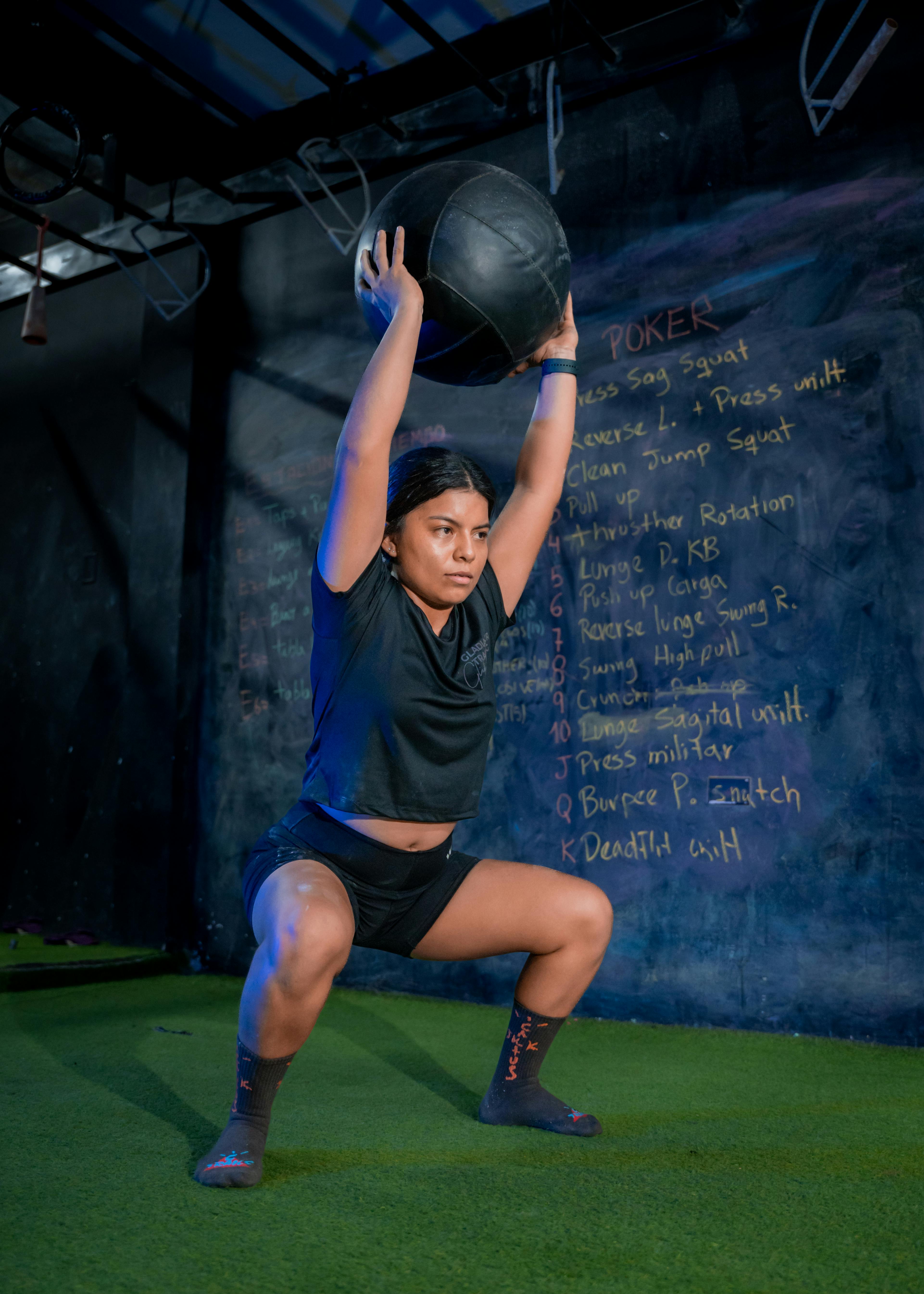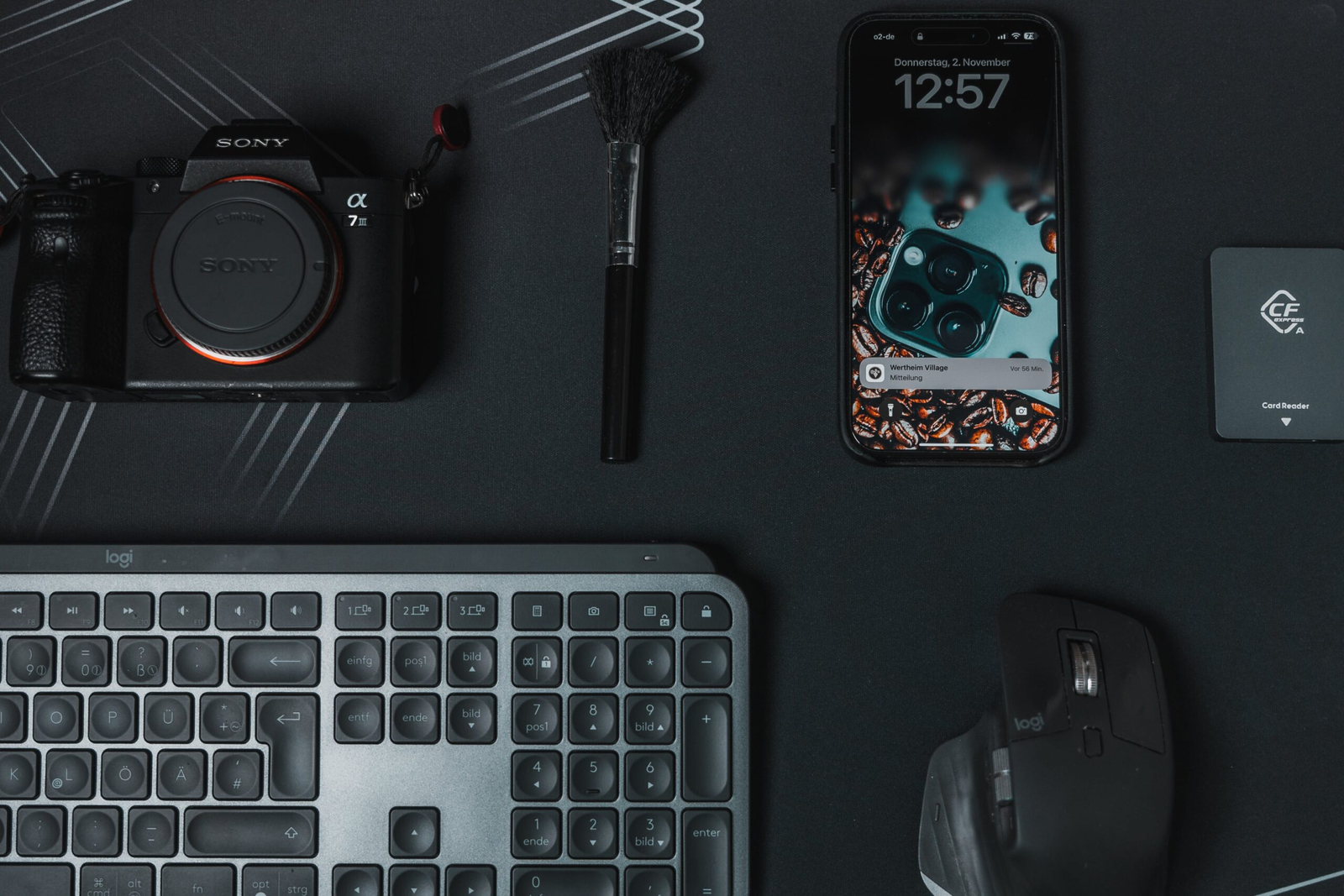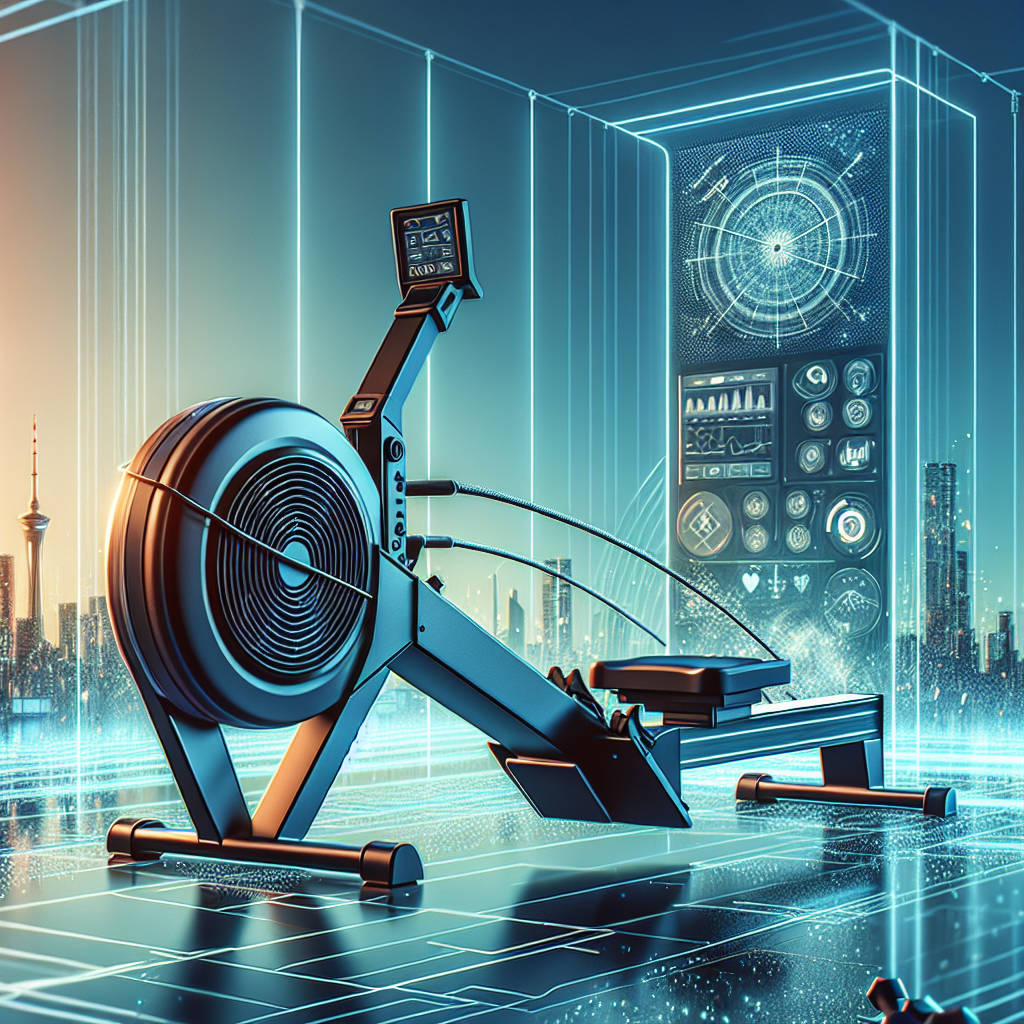Rowing Machine Gym How To Use
Are you excited to try out the new rowing machine at the gym but feeling a bit unsure about how to get started? Don’t worry, we’ve got you covered! In this article, we’ll walk you through the step-by-step process of setting up and using a rowing machine in the gym. Whether you’re a beginner or an experienced rower, these easy-to-follow instructions will help you make the most out of your workout and get those muscles pumping!

Setting Up the Rowing Machine
Adjusting the Resistance
When you first get on a rowing machine, you need to adjust the resistance to make it easier or harder to row. Most machines have a dial or lever that you can turn or slide to change the resistance. If you want a harder workout, you can increase the resistance. If you’re just starting out, it’s a good idea to start with lower resistance and gradually increase it as you get stronger.
Securing Your Feet
Next, you need to make sure your feet are securely fastened to the footrests of the rowing machine. This will help you maintain stability and prevent your feet from slipping out while rowing. Place your feet in the foot straps and tighten them so that they feel snug but not too tight. You want to have a firm grip on the footrests, but also be able to move your feet comfortably.
Adjusting the Seat
The seat on the rowing machine should be adjusted so that it is comfortable for you. If it’s too high or too low, it can make it difficult to row properly. Sit on the seat and make sure your knees are slightly bent when your feet are placed on the footrests. You should be able to fully extend your legs when you push off with your feet during the rowing motion. Adjust the seat as needed until you find the right position.
Checking the Monitor
The monitor on the rowing machine displays important information about your workout, such as the time, distance, stroke rate, and calories burned. Before you start rowing, make sure the monitor is working properly and that you can see the screen clearly. If there are any issues, notify a gym staff member so they can assist you. It’s important to monitor your progress and track your stats to see how you’re improving over time.
Proper Rowing Technique
Grip and Hand Placement
When holding the handle of the rowing machine, make sure your grip is firm but not too tight. Your hands should be slightly wider than shoulder-width apart and your thumbs should be wrapped around the handle. Keep your wrists straight and avoid bending them too much. This will help you maintain control and prevent any unnecessary strain on your wrists.
Foot Placement
Proper foot placement is crucial for maintaining balance and stability while rowing. Your feet should be positioned flat against the footrests and your toes should be slightly elevated. This will allow you to push off with your legs more effectively during the rowing motion. Make sure your heels are not lifted off the footrests and that your feet feel secure in the foot straps.
Body Position
Maintaining the correct body position is essential for a successful rowing workout. Sit up straight on the seat with your shoulders relaxed and your back slightly leaning forward. Engage your core muscles to help stabilize your body throughout the rowing motion. Avoid slouching or rounding your back, as this can lead to poor technique and potential discomfort or injury.
The Catch Phase
The catch phase is the starting position of the rowing stroke. Sit up tall, extend your arms forward, and bend your knees. Your shins should be vertical, with your feet flat on the footrests. Make sure your back remains straight and your core muscles are engaged. This position prepares you for the next phase of the rowing stroke.
The Drive Phase
The drive phase is where you generate power in the rowing stroke. Begin by pushing off with your legs, keeping your arms extended and your back straight. As you extend your legs, lean your upper body back slightly and start pulling the handle towards your chest with both hands. Engage your back, shoulder, and arm muscles to complete the drive phase.
The Finish Phase
Once you have pulled the handle towards your chest, lean your upper body slightly further back, engaging your core muscles. Your legs should be fully extended, and your elbows should be pointing behind you. This position is called the finish phase, and it completes the rowing stroke.
The Recovery Phase
In the recovery phase, you reverse the motion and prepare for the next stroke. Extend your arms forward, allowing the handle to move away from your chest. Simultaneously, your body should lean forward slightly with your legs still extended. Return to the catch phase by bending your knees and getting ready for another stroke.

Using Different Rowing Workouts
Steady-State Rowing
Steady-state rowing is a great way to build cardiovascular endurance and improve your overall fitness level. This workout involves rowing at a moderate pace for an extended period of time, usually between 20 and 60 minutes. It allows you to maintain a consistent rhythm and focus on perfecting your rowing technique.
Interval Training
Interval training is a more intense workout that involves alternating between periods of high-intensity rowing and rest or lower-intensity rowing. For example, you could row at a fast pace for 30 seconds, then row at a slower pace for 1 minute to recover. This type of workout helps improve your anaerobic fitness and can be an effective way to burn calories.
HIIT (High-Intensity Interval Training)
HIIT workouts are similar to interval training but involve even shorter bursts of high-intensity rowing. You might row as hard as you can for 20 seconds, then rest for 10 seconds, and repeat this cycle for a total of four minutes. HIIT workouts are great for building strength, increasing your metabolism, and burning fat in a shorter amount of time.
Pyramid Training
Pyramid training is a challenging workout that involves gradually increasing and then decreasing the intensity of your rowing. You start with a short period of rowing at a low intensity, then gradually increase the intensity until you reach a peak. After reaching the peak, you gradually decrease the intensity back down to the starting point. This workout helps improve both your aerobic and anaerobic fitness.
Long-Distance Rowing
Long-distance rowing is a good option if you want to focus on endurance and burning calories. This workout involves rowing at a moderate pace for a longer period of time, ideally between 45 minutes to an hour or more. It’s important to maintain a steady rhythm and pace yourself to conserve energy throughout the workout.
Monitoring Your Rowing Progress
Understanding the Monitor Functions
The monitor on the rowing machine provides valuable information about your workout. Spend some time familiarizing yourself with the different functions and buttons on the monitor. Most monitors allow you to track time, distance, stroke rate, and calories burned. Some monitors may also have additional features such as pre-set workouts or the ability to connect to fitness apps.
Tracking Time and Distance
The monitor will display the time elapsed since you started rowing, allowing you to keep track of your workout duration. It will also show the distance you have rowed, which is helpful for setting goals and measuring your progress over time. Keep an eye on these numbers to challenge yourself and strive for improvement in each workout.
Monitoring Stroke Rate
The stroke rate refers to the number of rowing strokes you complete in one minute. It is an important metric that can help you maintain a consistent pace and rhythm. Aim for a stroke rate of around 20 to 30 strokes per minute when starting out. As you become more experienced, you can adjust your stroke rate based on your fitness goals and the type of workout you are doing.
Measuring Calories Burned
Many rowing machines have a feature that estimates the number of calories burned during your workout. While this number is an estimate and may not be completely accurate, it can still be a useful tool for tracking your overall calorie expenditure. Keep in mind that the number of calories burned can vary depending on factors such as your weight, intensity of the workout, and your own metabolism.

Safety Tips for Rowing Machine Gym
Start Slowly and Warm Up
Just like any other exercise, it’s important to start your rowing workout slowly and warm up beforehand. Begin with a few minutes of light rowing to gradually increase your heart rate and warm up your muscles. This helps prevent injuries and prepares your body for the more intense parts of your workout.
Maintain Proper Form
Maintaining proper form throughout your rowing workout is crucial for preventing injuries and getting the most out of your exercise. Focus on keeping your back straight, your core engaged, and your movements controlled. Avoid hunching or rounding your back, as this can strain your lower back. If you’re unsure about your form, ask a gym instructor or trainer for guidance.
Don’t Overexert Yourself
While it’s important to challenge yourself during your rowing workouts, it’s equally important to listen to your body and avoid overexertion. Pushing yourself too hard or rowing with improper form can lead to injuries. Take breaks when needed and gradually increase the intensity and duration of your workouts over time.
Stay Hydrated
Hydration is key when exercising, including when using a rowing machine. Make sure to drink plenty of water before, during, and after your workout to stay properly hydrated. Dehydration can negatively affect your performance and increase the risk of muscle cramps or fatigue.
Listen to Your Body
Pay attention to how your body feels during your rowing workouts. If you experience any pain, discomfort, or dizziness, it’s important to stop and rest. Pushing through pain can lead to further injuries. If you have any concerns or persistent discomfort, consult a healthcare professional.
Use a Spotter for Heavy Resistance
For more advanced rowing workouts that involve heavy resistance or maximum effort, it’s a good idea to have a spotter nearby. A spotter can help ensure your safety and offer support if you need assistance during your workout. They can also provide guidance on maintaining proper form and technique.
Common Mistakes to Avoid
Rounded Back
One common mistake is rounding the back while rowing. This can strain the lower back and lead to discomfort or injury. Remember to sit up straight and engage your core muscles throughout the rowing motion. This helps maintain proper form and protect your back.
Using Only the Arms
Rowing should be a full-body workout, not just an arm exercise. Avoid relying solely on your arms to pull the handle. Instead, use the power of your legs and engage your core and back muscles to generate force. This allows you to row more efficiently and prevents excessive strain on the arms.
Pulling Too Hard
While it may seem tempting to pull the handle with all your strength, it’s important to find the right balance. Pulling too hard can lead to jerky, uncontrolled movements, and may even cause injury. Focus on smooth, controlled strokes and find a rhythm that allows you to maintain proper form.
Not Using the Legs
Your legs are the strongest muscles in your body, so it’s important to utilize them during rowing. Push off with your legs to generate power and use your arms and upper body to finish the stroke. Neglecting to engage your legs can result in an incomplete stroke and decreased efficiency.
Rowing Too Fast without Control
Speed is not the most important factor in rowing. It’s better to row with control and maintain proper technique than to row quickly but with poor form. Focus on a smooth, controlled stroke and gradually increase your speed as you become more comfortable and proficient.
Ignoring Warm-Up and Cool-Down
Skipping warm-up and cool-down exercises can increase the risk of injury and leave you feeling sore after your workout. Take the time to warm up with light rowing and cool down with stretching exercises. This helps prepare your body for exercise and aids in muscle recovery.

Benefits of Rowing Machine Gym
Full-Body Workout
Rowing is a great exercise because it engages multiple muscle groups in your body. It targets your legs, core, arms, back, and shoulders, providing a comprehensive full-body workout. This can help improve your strength, endurance, and overall fitness level.
Low-Impact Exercise
Rowing is a low-impact exercise that puts minimal stress on your joints. Unlike activities such as running or jumping, rowing is gentle on your knees, hips, and ankles. This makes it a suitable option for people of all ages and fitness levels, including those with joint issues or injuries.
Cardiovascular Endurance
Rowing is an excellent aerobic exercise that can improve your cardiovascular endurance. It gets your heart rate up and increases your lung capacity, helping to strengthen your heart and improve circulation. Regular rowing workouts can enhance your overall cardiovascular health and stamina.
Muscle Toning and Strength
Rowing is not only a great cardio workout but also an effective way to build muscle strength and tone your body. The pushing and pulling motion of rowing engages major muscle groups, helping to improve muscle definition and strength. It particularly targets your quadriceps, hamstrings, glutes, back muscles, and biceps.
Weight Loss
Rowing can be an effective exercise for weight loss. It burns a significant amount of calories and engages multiple muscle groups, making it a highly efficient workout. Combined with a balanced diet, regular rowing sessions can contribute to weight loss and help you achieve your fitness goals.
Joint Support
The fluid motion of rowing helps to lubricate your joints and promote joint health. It can be a beneficial exercise for those with joint conditions such as arthritis or those recovering from injuries. Rowing provides a low-impact way to strengthen the muscles around your joints and support their overall function.
Incorporating Rowing into Your Fitness Routine
Choosing the Right Frequency
When incorporating rowing into your fitness routine, it’s important to find a frequency that works for you. Aim to row at least 2-3 times a week to see progress and maximize the benefits of the exercise. You can gradually increase the frequency as you become more comfortable and your fitness level improves.
Combining Rowing with Other Exercises
Rowing can be a versatile addition to your fitness routine and can be combined with other types of exercises. Consider incorporating strength training exercises, such as weightlifting or bodyweight exercises, on days when you’re not rowing. This helps create a well-rounded fitness program that targets different muscle groups.
Progressing and Setting Goals
As you become more experienced and comfortable with rowing, it’s important to continually challenge yourself and set goals. Increase the intensity or duration of your rowing workouts to push your limits and keep progressing. Setting specific goals, such as rowing a certain distance in a set amount of time or increasing your stroke rate, can help provide motivation and track your progress.
Cleaning and Maintenance
Wiping Down the Machine
After each use, it’s important to wipe down the rowing machine to keep it clean and hygienic. Use a clean towel or disinfectant wipe to clean the seat, handles, footrests, and any other surfaces that may have come into contact with sweat. This helps prevent the spread of germs and keeps the machine in good condition.
Cleaning the Seat and Handles
The seat and handles of the rowing machine can become dirty and sweaty during your workout. To clean these areas, use a mild soap and water solution or an appropriate cleaning product. Gently scrub the surfaces with a cloth or sponge and rinse with clean water. Make sure to dry the seat and handles thoroughly to prevent any moisture buildup.
Inspecting and Lubricating the Chain
The chain is an important component of the rowing machine that requires regular maintenance. Check the chain for any signs of wear, such as rust or fraying. If necessary, lubricate the chain with a silicone-based lubricant to ensure smooth and quiet operation. Follow the manufacturer’s instructions for proper chain maintenance and lubrication.
Checking the Monitor and Electronics
Periodically check the monitor and other electronic components of the rowing machine to ensure they are functioning properly. Inspect the cables and connectors for any damage or loose connections. If you notice any issues, notify the gym staff or consult the manufacturer’s instructions for troubleshooting steps.
Rowing Machine Gym Etiquette
Wipe Down Equipment After Use
Always remember to wipe down the rowing machine and any other equipment you use after you’re done with your workout. This helps keep the gym clean and hygienic for the next person. Use the provided cleaning supplies to thoroughly clean the seat, handles, and any other surfaces you may have touched.
Share the Machine’s Time
If the rowing machine is in high demand at your gym, be considerate and mindful of others who may be waiting to use it. Limit your time on the machine to a reasonable duration, especially during peak hours. If you notice other gym-goers waiting, offer to finish your workout and allow them to take turns.
Properly Reserve the Machine
Some gyms may have a system in place where you can reserve the rowing machine ahead of time. If this is the case, make sure to follow the proper procedures for reserving the machine and respecting the reservation times. Be punctual and efficient with your workout to ensure everyone has a fair opportunity to use the machine.
Respecting Other Gym Users
When using the rowing machine, be aware of your surroundings and respect the personal space of other gym-goers. Avoid placing personal items on neighboring machines or blocking access to equipment. If someone is using a nearby machine, maintain a respectful distance to allow them to exercise comfortably.
